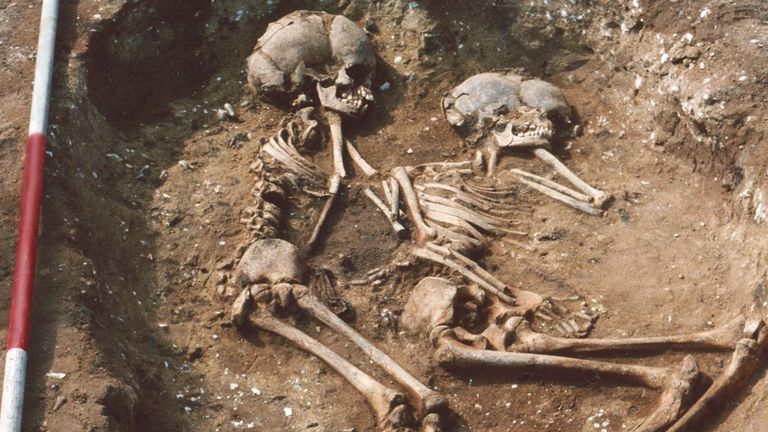Latest Ads
-
Jasmine Jewel
Call
-
Omidan group
Call
-
Amir Madanpour
Call
-
Dimo studio
Call
-
Yorkacademy
Call
-
Maryambagheri
Call
-
Shishlix Restaurant
Call

‘They are together forever’: B.C. couple with off-roading YouTube channel killed in rollover crash
Archaeologists examining two separate graves on the south coast of England that are more than 1,000 years old have found that one of the people’s close ancestors, possibly a grandparent, was from West Africa.
Researchers from British universities have been analysing ancient DNA from people buried in two 7th-century cemeteries – Updown in Kent and Worth Matravers in Dorset – to examine migration patterns in Europe during the early Middle Ages.
Duncan Sayer, a professor at Lancaster University and lead author of the Updown study, said the initial aim of the research was to understand family and kinship patterns and look for signs of early Anglo-Saxon migrations to Britain. He also described Kent as “a route of influence from the neighbouring continent” and noted that the Updown grave is close to the royal centre of Fingalsham, suggesting widespread connections in royal networks at the time.
The Updown grave contained objects such as a vessel possibly belonging to the Gauls, a spoon that could be a symbol of the Christian faith, and gold, silver and garnet jewellery. At Worth Matravers in Dorset, which was on the fringes of continental influence compared to Updown, a boy was buried in a double grave. His grave contained a local anchor stone, suggesting his connection to the sea or seafaring.
Most of the people buried in these cemeteries were of northern European or western British and Irish origin, but one person in each cemetery had close ancestry from West Africa. Their maternal DNA was northern European, but their autosomal DNA indicated a non-European background, linked to the Yoruba, Mende, Mandenka and Isan groups of West Africa. The findings suggest mixed ancestry and the presence of one grandparent from West Africa.
The possible route of entry into Europe could have been from East Africa to the Nile River, then to Alexandria in Egypt, across the Mediterranean to Byzantium and Rome, over the Alps to France and Germany, and finally to Britain.
The researchers stressed that these results demonstrate the diversity and cosmopolitan nature of England in the early Middle Ages, and suggest a widely connected population who, even over long distances, were fully integrated into the fabric of everyday life.
Suggested Content
Latest Blog
Login first to rate.
Express your opinion
Login first to submit a comment.
No comments yet.


































